How to lay tiles in the bathroom when arranging a shower - general requirements
A bathroom is not only a room that serves certain practical purposes. For many, this is a kind of showcase at home. Therefore, we are ready to make a lot of efforts, so that our the bathroom was beautiful, individual, comfortable, practical and durable.
If the area of \u200b\u200bthe bathroom allows you to make a separate shower stall, then a good solution would be to equip such a cabin with a drain directly into the floor. Although this is more difficult than installing a shower stall with a ready-made tray, it is undoubtedly more practical and stylish.
The large area of the bathroom makes it possible to apply interesting solutions when using tiles of different sizes. It is optimal to use ceramic tiles of large sizes, in combination with the opposite - mosaics.
However, laying even the most fashionable and modern tile designs is not the whole story. In order to achieve the effect that meets your expectations, all tiles must be laid properly. And if you decide to lay tiles in the bathroom and, then you just need to know the general requirements for such work.
Special preparation of the surface of the floor or walls, in principle, is not at all an obligatory step in the work of laying tiles in the bathroom. Initially, correctly made walls or floors do not need any special preparation. Unfortunately, in practice this does not happen very often.
Preparing the floor surface for tiles.
Cement-sand flooring in a bathroom with a pre-laid waterproofing layer, as a rule, does not require special preparation before laying the tiles. The floor surface must be uniform, level and free of debris, grease and other contaminants. Before laying tiles, floors should be treated with a simple primer emulsion, which is offered by most tile adhesive manufacturers.
For example, a primer Ceresit - Germany, Atlas - Poland, Perfecta - Russia and other universal deep penetration primers, which, in addition to strengthening and protecting against moisture, have antiseptic properties and provide protection against the formation of fungus and mold.
Coating the floor surface with a primer is a necessary step before laying tiles
Preparing wall surfaces for tiles.
The situation is different with the walls. The material from which they were built plays an important role here. Plastered walls built in traditional technology also require nothing but a primer.
Its use is also aimed at reducing the rate of moisture absorption by the wall surface. As a result of applying the primer, moisture from the tile adhesive is released more slowly, which provides better adhesion and reliability.
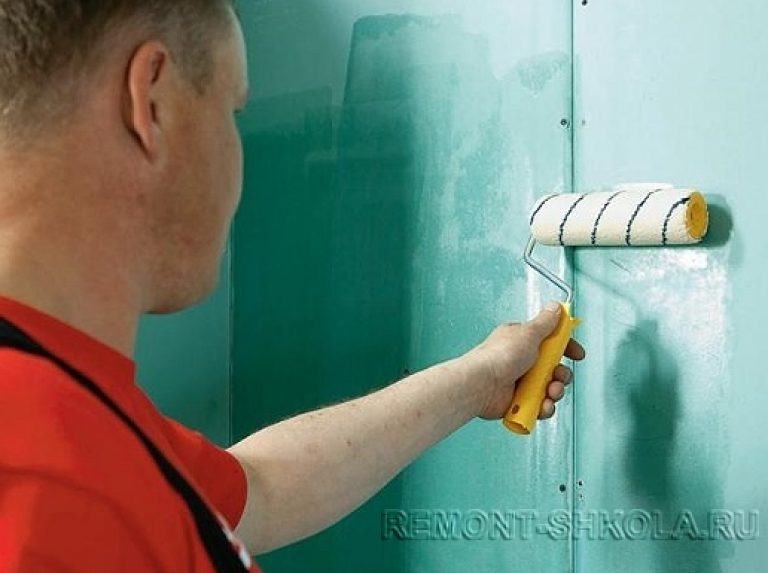
Coating the surface of plasterboard walls with concrete-contact - confidence in the quality of work.
In contrast, very smooth walls, such as those made of concrete, require a different type of primer: concrete-contact from various manufacturers. Concrete contact in this case increases the adhesion of the wall surface and tile adhesive, due to the presence of quartz sand in its composition. This will give the desired roughness to the surface of the walls.
Walls made of waterproof drywall are smooth and do not absorb moisture well. Therefore, as in the case of concrete, before laying the tiles, they must be treated with a compound intended for such walls, which roughen the surface, thereby increasing adhesion.
2. Take care of the tightness of the bathroom
Tightness is the main criterion for the quality of tile laying in the bathroom. No need to explain simply the vital need for absolute tightness of the bathroom. Of course, the floor and walls at the site of the construction of the shower cubicle must be completely sealed.
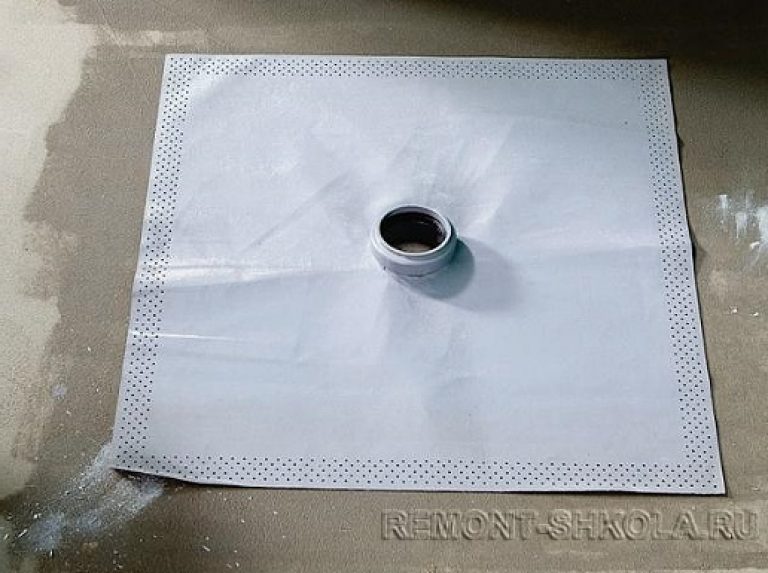
High-quality sealing of difficult places is a prerequisite.
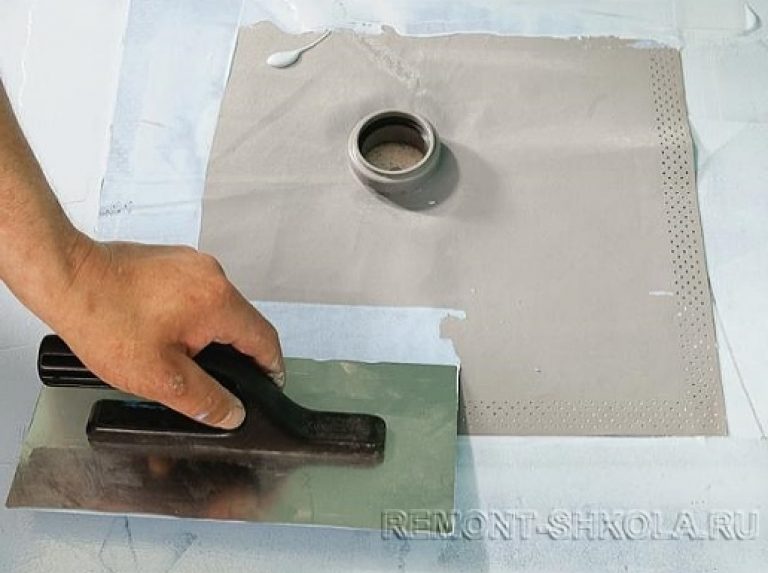
The drain is one of the most important places for sealing.
In this case, tightness must be ensured primarily in the so-called difficult places. Wall corners, wall-to-floor junctions, places around manholes, around water pipes, must be covered with a special insulating tape.
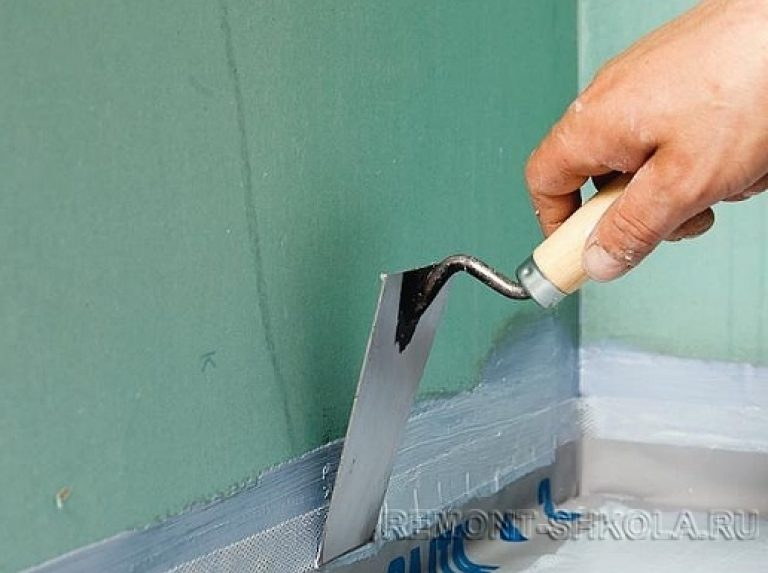
Reinforced sealing of the junction of walls and floor at the construction site of the shower stall is done to a height of at least 10 cm.
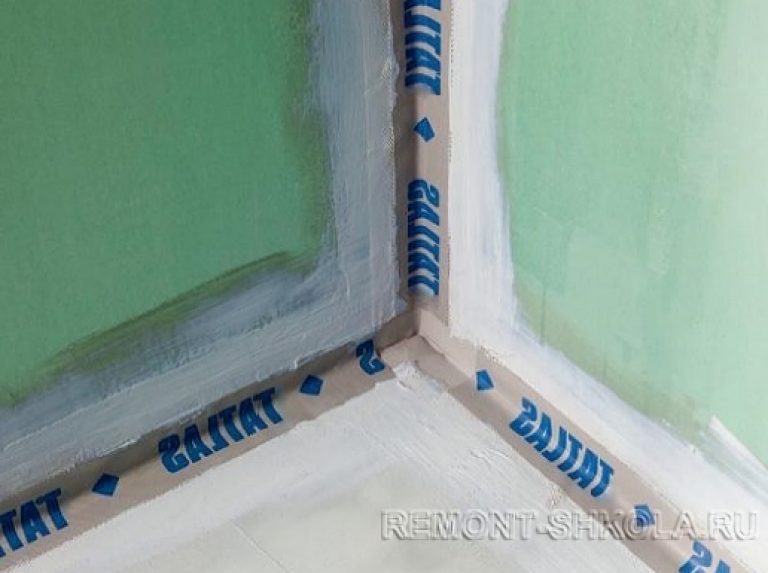
The corners at the construction site of the shower cubicle are provided with reinforced sealing.
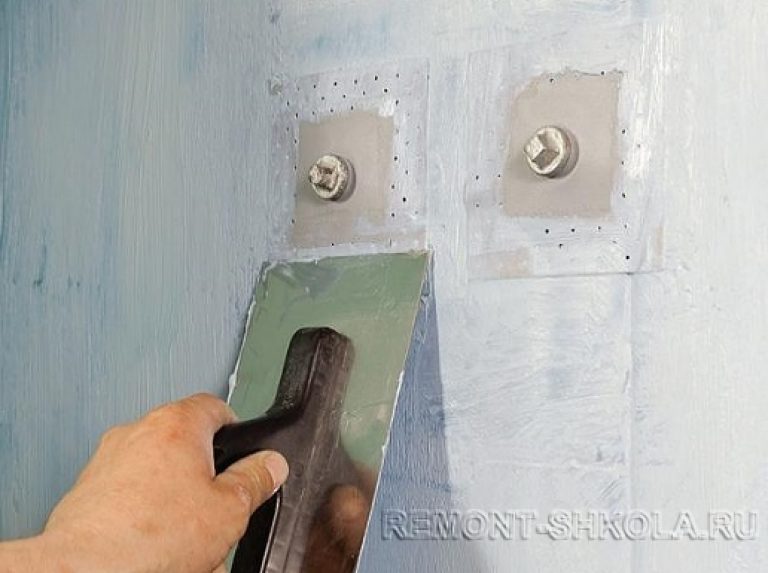
Any difficult places are subject to additional sealing.

Properly made sealing of difficult places, floors and walls at the installation site of the booth.
3. Lay tiles in the bathroom. General requirements
Regardless of where the tiles are glued, on the floor or on the wall, if it is a bathroom, then one important rule must be followed: the surface must be protected from moisture ingress where this possibility remains. And the ingress of moisture is almost impossible to avoid in a room with high humidity.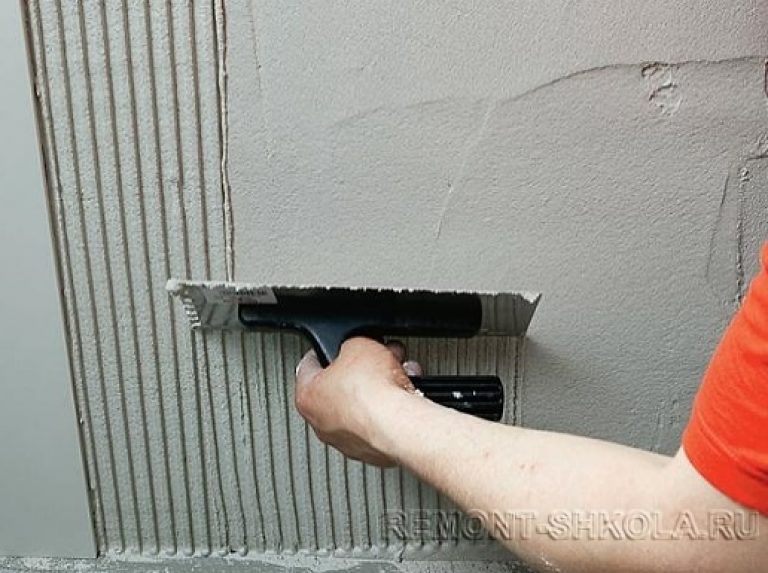
Leveling the adhesive layer with a notched trowel.
For example, in the short term, more often than in other rooms, we are more likely to flood the floor (water from the washing machine, basin, and so on). As a result, if the technology of laying tiles is violated, this can lead to peeling of the tiles, gradual destruction of the surface and water leakage.
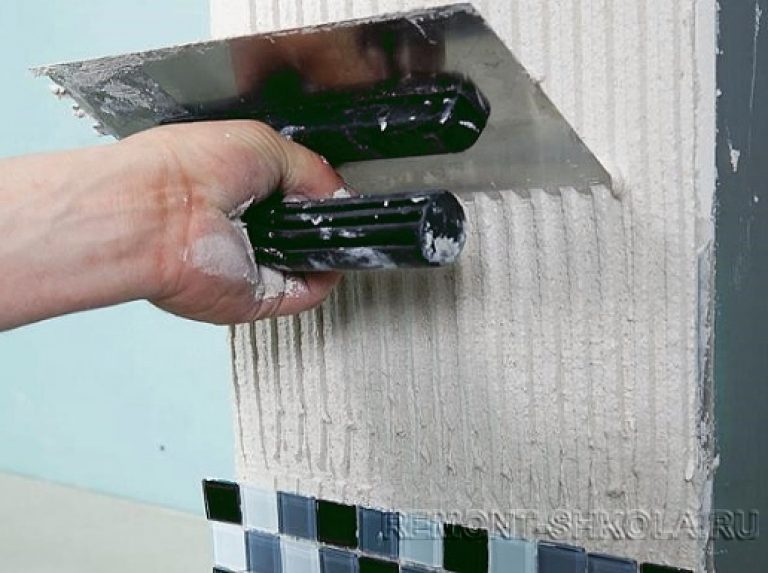
Applying a special white mosaic adhesive with a notched trowel.
Glue is applied to the surface of the wall or floor with a special notched trowel.
As a rule, the adhesive is applied to the wall with an even trowel, followed by leveling with a notched trowel.
The use of this type of spatula provides the best adhesion of the adhesive to the tile and allows you to evenly distribute the adhesive layer over the entire plane of the tile laying.
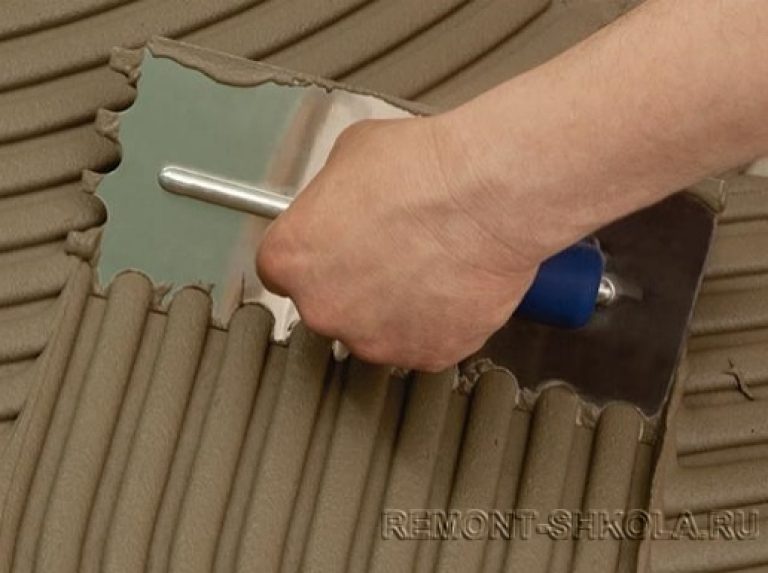
Leveling the layer of special adhesive with a notched trowel for laying floor tiles.
The type of adhesive that you should use when laying tiles on the floor is determined by the size of the tile itself, its composition and the surface of the substrate.
For example, if you are laying porcelain stoneware on the floor, it is recommended to use a special porcelain stoneware adhesive. If you are laying tiles of small sizes, then it is quite possible to do basic adhesive. If the tile is medium in size, then you need to use reinforced tile adhesive. If you are installing large, heavy floor tiles, use special glue.

Laying heavy floor tiles with special adhesive
For bonding tiles to deformable surfaces, such as plasterboard walls, you must select adhesives from a special category.
To glue the mosaic, use white tile adhesive with improved performance. As a rule, large manufacturers in their product line have special white adhesives specifically for mosaics.
4. Tile joints in the bathroom. Grout
In the final stage of laying tiles in the bathroom, it is necessary to ensure choosing the right grout for tile joints. It should protect the seams from water seepage through them, beautify the appearance of the surface, and be easy to maintain.
It must be a special grout designed for use in rooms with high humidity. If you use grout to fill tile joints when laying it on drywall walls, the grout must also be suitable for deformable surfaces.
In addition to the requirement for tightness, grout for tile joints in the bathroom must provide simplicity and ease of cleaning. Therefore, the grout must contain components that contribute to this function.
It is advisable to select a grout containing in its composition supplements that reduce the growth of fungus and the likelihood of mold, antibacterial supplements and anti-fading additives.
For example, grout is suitable Ceresit - Germany, Atlas - Poland, Ultracolor plus (Mapei) - Italy. From Russian manufacturers - Eunice, Litokol.
It is also possible to choose a grout with additional decorative properties, for example, with a glossy effect or splashes of a color different from the main color of the grout.
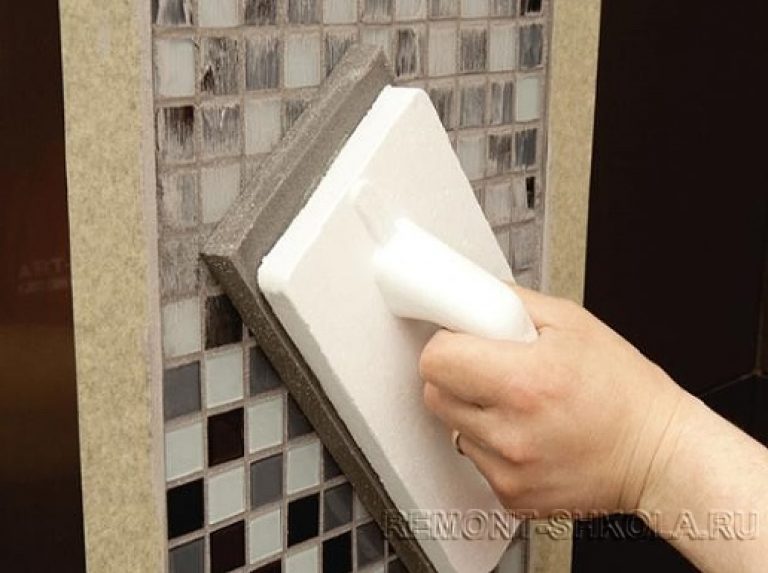
Grouting mosaic tile joints with a construction trowel.
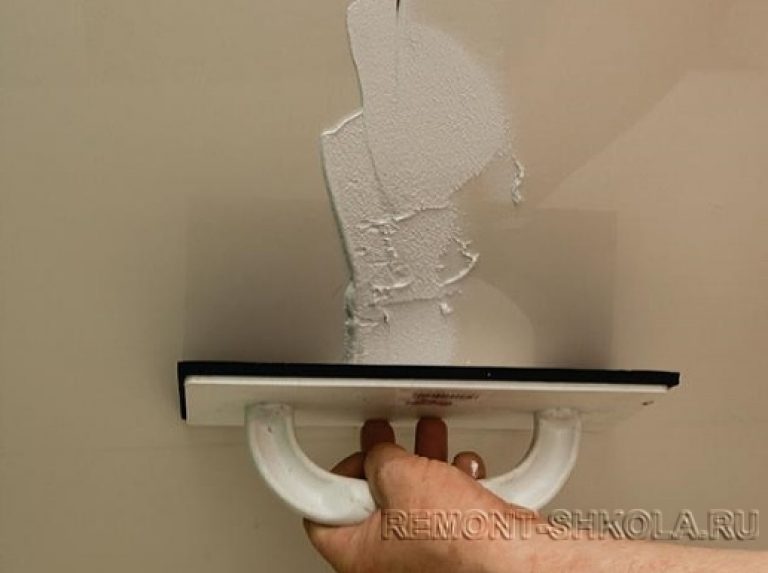
Grouting tile joints of wall tiles with a construction trowel.
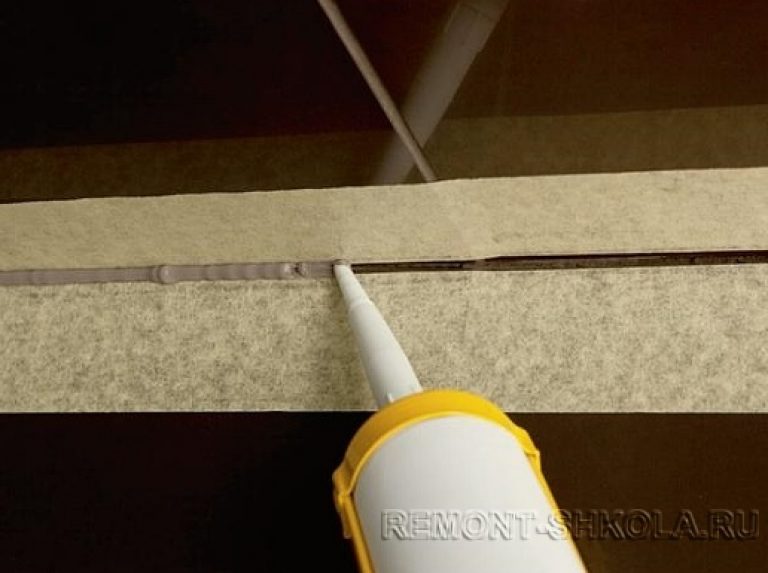
Using silicone grout in difficult places.
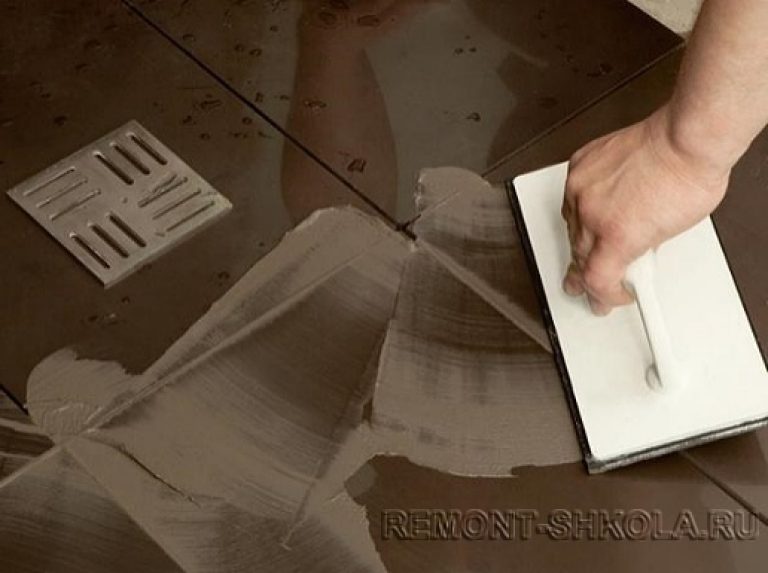
Grouting tile joints of floor tiles with a construction grater.
5. The choice of materials when laying tiles in the bathroom
Exactly choose the right primer, the right glue and grout for the tiles maybe not only a specialist tiler, but also one who has never done such a selection himself. Well-known manufacturers on their websites describe in detail all the characteristics that determine the choice itself.
See, as an example, the information of one of the adhesive manufacturers located on the site. There is information of approximately the same nature about the primer and grout.
Mandatory adhesive manufacturer information about the product:
- the surface on which the tiles are laid (cement-sand, aerated concrete, plasterboard, chipboard, wood, etc.);
— type of facing material (ceramics, glass, natural stone, marble, porcelain stoneware, etc.);
– the purpose of the adhesive (use in rooms with normal or high humidity, for outdoor use, for swimming pools, etc.);
- requirements for the preparation of the base and the procedure for preparing the solution;
- the procedure for performing work, filling joints and operating.
That is, there is a real opportunity before purchasing a product to thoroughly study the necessary information and select the product you need.
Choice of manufacturer.
In fact, when purchasing products from a well-known manufacturer, having the confidence of protection against counterfeiting, you do not risk anything by choosing one or another brand. However, it is highly recommended select a primer, adhesive and grout for tile joints of the same manufacturer.

Bathroom design option. Shower cubicle, bathroom. Combination of large tiles and mosaics.
In this case, the possibility of incompatibility of materials is excluded and the quality of selection is ensured, since there are manufacturer's recommendations for a comprehensive solution to a specific problem.




